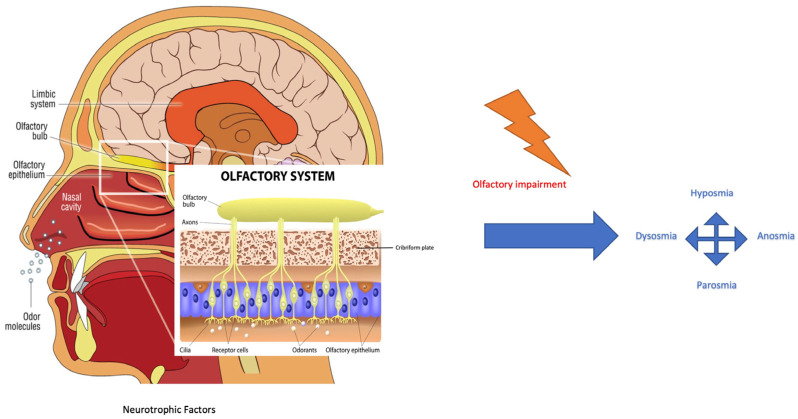Figure 1.
Odorant signal transmission and the human olfactory system. Focus is on the olfactory system and neuroepithelium, composed of olfactory sensory neurons that, through the lamina cribrosa plate, establish a synaptic connection with the mitral and tufted cells of the olfactory bulb. The axons of the monosynaptic mitral and tufted cells that make up the olfactory tract bifurcate at the terminus, fornix, or olfactory cortices. Primarily, the limbic system with the pyriform cortex, amygdala, and entorhinal cortex is involved [4]. Olfactory impairment induces modifications to smell, as reported in the text. (Modified from medical illustration by Patrick J. Lynch).

